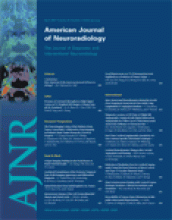J.D. Pickard, N. Akalan, C. Di Rocco, V.V. Dolenc, R. Fahlbusch, J. Lobo Antunes, J.J. Mooij, M. Sindou, and C.A.F. Tulleken, eds. New York: Springer Wien; 2006. 289 pages, 84 figures, $179.
This is the 31st in a series of volumes sponsored by the European Association of Neurosurgical Societies intended as aids to training for young neurosurgeons. In addition, the editors believe that this series is useful for experienced neurosurgeons. Each of these volumes consists of 2 parts. The first part reviews recent advances in neurosurgery and related areas, whereas the second part consists of descriptions of operative procedures and reviews of various aspects of neurosurgery. This series is published in English because the editors acknowledge that English is the international language for communication at European conferences. The contributors are from various institutions in Switzerland, Italy, France, and Finland. In some areas of the book, the English text is somewhat stilted, and there are some grammatic errors.
In this volume, the advances section is relatively brief, constituting only 30 of the 289 pages. The only chapter in this section is entitled “Gene Technology Based Therapies in the Brain.” The chapter begins with a history of gene therapy, including attempts at therapy outside the nervous system. The discussions of gene therapy in the brain cover Parkinson disease, Alzheimer disease, vascular disease, brain tumors, and the challenges in attempting gene therapy in the brain. Various types of viral vectors and the implications of the blood-brain barrier are reviewed.
In this chapter, “Gene Therapy for Parkinson's Disease” covers the possibility of providing growth factors to help preserve dopaminergic neurons and of another approach to sustaining dopamine by supplying enzymes for dopamine production. “Gene Therapy for Alzheimer's Disease” deals with the use of growth factors to protect cholinergic neurons. “Gene Therapy for Vascular Brain Disease” presents the possibility of providing endothelial nitrous oxide synthase to reduce vasospasm and the possibility of stimulation of growth of collateral blood vessels by endothelial growth factors for treatment of cerebral ischemia. Other strategies focus on inhibition of genes related to cytokines that are believed harmful after ischemia. “Gene Therapy for Brain Tumors” centers on treatment of malignant glioma. There is a discussion of ongoing clinical trials involving thymidine kinase–ganciclovir therapy and other strategies such as triggering apoptosis in tumor cells via tumor-suppressor genes. Other approaches to tumors involving inhibition of angiogenesis, alteration of extracellular matrix, and immune modulation are included.
This volume covers the different types of viral vectors that have been investigated and the methods of delivery of the vectors. Methods for stereotactic inoculation of vectors into tumors and delivery of genes via transvascular approaches with blood-brain barrier disruption are presented. The interaction of the vectors with the immune system are discussed. Viral vectors discussed include retroviruses, herpes simplex virus, adenoviruses, and adenoassociated viruses. Nonviral vectors discussed include polycationic carriers and cationic lipids.
The limitations and risks of gene therapy are recognized in this chapter on gene technology–based therapies, and there is discussion of ethical issues. This chapter is a broad review of the topic and does not present extensive detail on any 1 aspect. It is a good starting point for someone seriously interested in reviewing the subject. Such a reader will be very interested in the 11 pages of references at the end of the chapter. This extensive bibliography (189 references) will provide the necessary detail for someone wishing to delve further.
The first 2 chapters of the technical standards section cover orbital anatomy and surgery. The first of these chapters begins with an extensive review of orbital anatomy; the text is straightforward and relatively clear. There are well-labeled photographs of bony anatomy and diagrams of the anatomy of the extraocular muscles and the orbital vasculature and nerves. The photographs of anatomic dissections of the orbit with injected vessels are mostly of good quality. The surgical approaches are those most likely to be used by the neurosurgeon: lateral, superior, and superolateral. Anterior and medial approaches, which would be more likely the domain of the ophthalmologist and otolaryngologist, are excluded. The discussion of the lateral approach includes both osteoplastic and non-osteoplastic techniques and is illustrated with well-labeled photographs of cadaver exposures. Likewise, the descriptions of the superior and hybrid superolateral approaches are illustrated with labeled photographs of cadaver dissections. The surgical presentations are detailed and include subtleties of technique. There is an emphasis on preventing injury to orbital structures and a description of the proper role of these approaches and the proper selection of approach for specific locations of lesions. “Intimate familiarity with the microanatomy of the region is indispensable before surgery is undertaken in the orbit,” is an appropriate conclusion. The references at the end of the chapter are adequate for further exploration of the topic.
The second chapter on the orbit covers orbital tumors. After a section on history, there is an excellent compendium of descriptions of different types of orbital tumors. These are organized into tumors occurring primarily during childhood and those found primarily in adults. Each tumor is treated with a useful individual description, followed by one about surgical approaches. These approaches are similar to those described in the previous chapter, but rather than being excessively redundant, the 2 chapters complement each other. The groups of authors have different styles of describing their surgery, bringing out subtleties of the approaches. This chapter has effective illustrations of surgical incisions and exposures that nicely add to the previous chapter, and it includes more attention to reconstruction of the orbit during closure. Taken together, these 2 chapters provide a very good overview of orbital anatomy and surgery as practiced by neurosurgeons.
The longest chapter in the book is “Endoscopic Third Ventriculostomy in the Treatment of Hydrocephalus in Pediatric Patients.” The chapter is comprehensive, covering anatomy, technology, indications, and results. A good presentation of historic background is followed by detailed descriptions of endoscopic anatomy in the pertinent regions of the lateral and third ventricles. This section is well illustrated with color photographs of endoscopic views correlated with corresponding MR imaging. The various types of endoscopes are then explained in detail with illustrations. The techniques of use of the endoscopes and accessories, such as perforating devices, coagulation devices, balloon catheters, and other instruments, are reviewed. The indications for endoscopic third ventriculostomy are then provided. Hydrocephalus due to aqueductal stenosis is extensively described, followed by hydrocephalus related to posterior fossa tumors. The possible use of this procedure in hydrocephalus with a communicating component is suggested. The presentation of the use of third ventriculostomy in posthemorrhagic and postinfectious hydrocephalus is followed by other disorders such as Dandy Walker syndrome and hydrocephalus with myelomeningocele. Analysis of outcome of the procedure is extensively discussed, with criteria for defining a successful result. This involves neuroradiologic evaluations and may involve intracranial pressure monitoring. The section on early and late results includes reviewing the available information on intellectual outcome. Finally, an appropriate amount of space is devoted to complications. Although this chapter has somewhat stilted English, it is a useful comprehensive review of a relatively narrow topic that has been significantly influenced by advances in technology.
The next chapter is “Minimally Invasive Procedures for the Treatment of Failed Back Surgery Syndrome.” The chapter begins with a good introduction to the problem, particularly of areas of prevalence and cost. Next is a discussion of the diagnostic process for chronic lower back pain, including specifics of history taking and physical examination and the limitations of these exercises. There is an extensive review of radiologic findings in failed back patients. The discussion of minimally invasive diagnostic procedures includes provocative diskography and nerve blocks performed with fluoroscopy; these should be of particular interest to the radiologist. The extensive coverage of minimally invasive treatments for lower back pain includes intradiskal electrotherapy, radio-frequency lesions, epidural injections, percutaneous epidural neuroplasty, epiduroscopy, spinal cord stimulation, and intrathecal medications. This chapter includes a good review of these techniques but is primarily procedure-oriented, including both diagnostic and therapeutic procedures. Although it has a thorough discussion of these procedures, the chapter should not be taken as a comprehensive approach to the evaluation and treatment of patients with failed backs. The most important missing component is the least invasive type of procedure, which is also most likely to produce benefits to most of these patients, namely aggressive physical therapy and rehabilitation.
The final chapter covers surgical anatomy of the calvarial skin and bones, with reference to neurosurgical approaches. It reviews the layers, vasculature, and innervation of the scalp. The discussion of the skull begins with surface landmarks and includes particular detail concerning the base of the skull and the relations of venous sinuses to the surface landmarks of the skull. The chapter is relatively brief compared with the other chapters, but the illustrations, particularly of temporal bone anatomy, are very good.
This book is intended for neurosurgeons, but many neuroradiologists will find it of interest. There are correlations between neurosurgical treatments and radiologic studies that are well illustrated. Reviewing this type of text can give the radiologist perspectives on how the neurosurgeon applies the knowledge gained from the radiographic studies.

- Copyright © American Society of Neuroradiology












